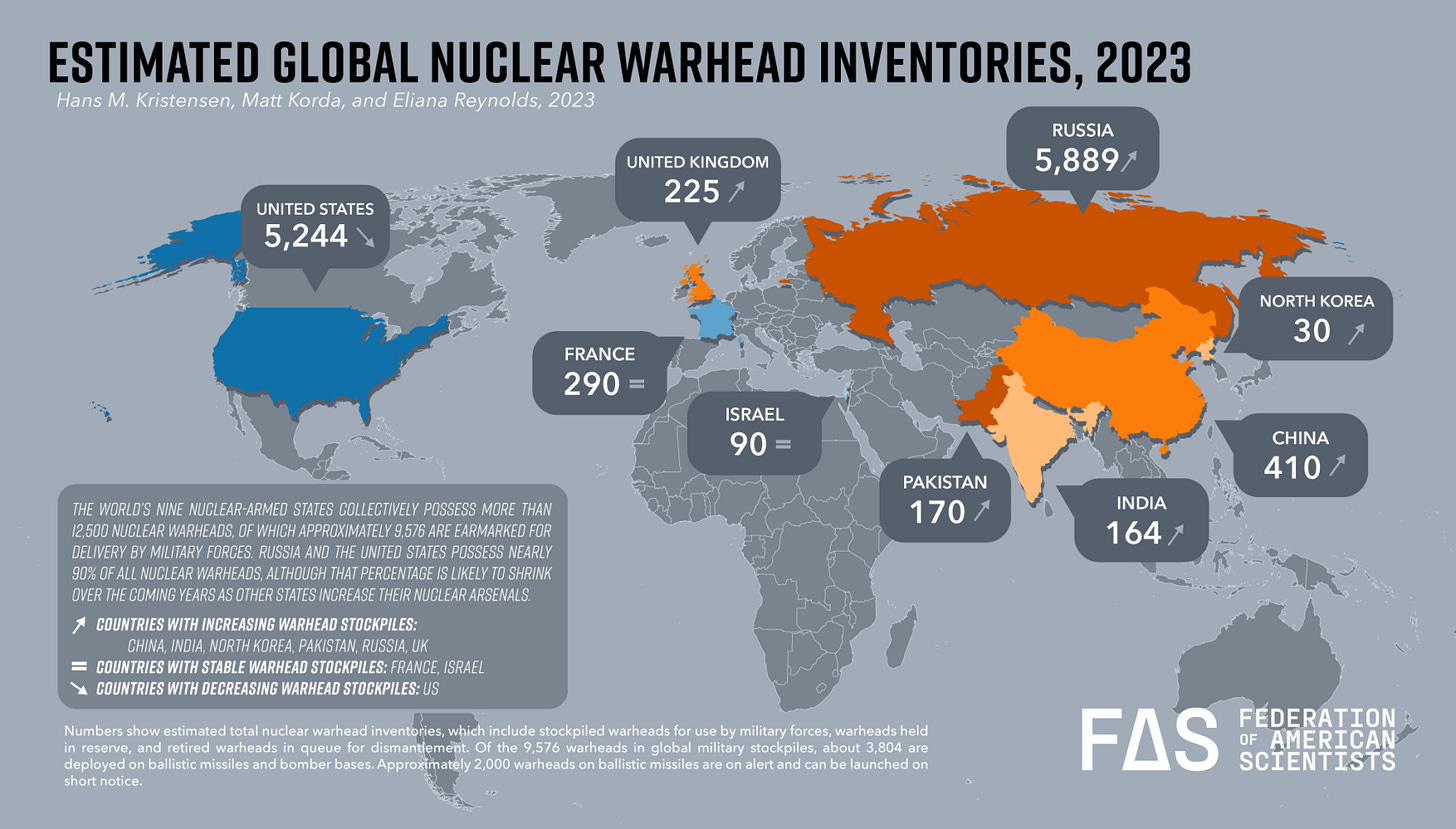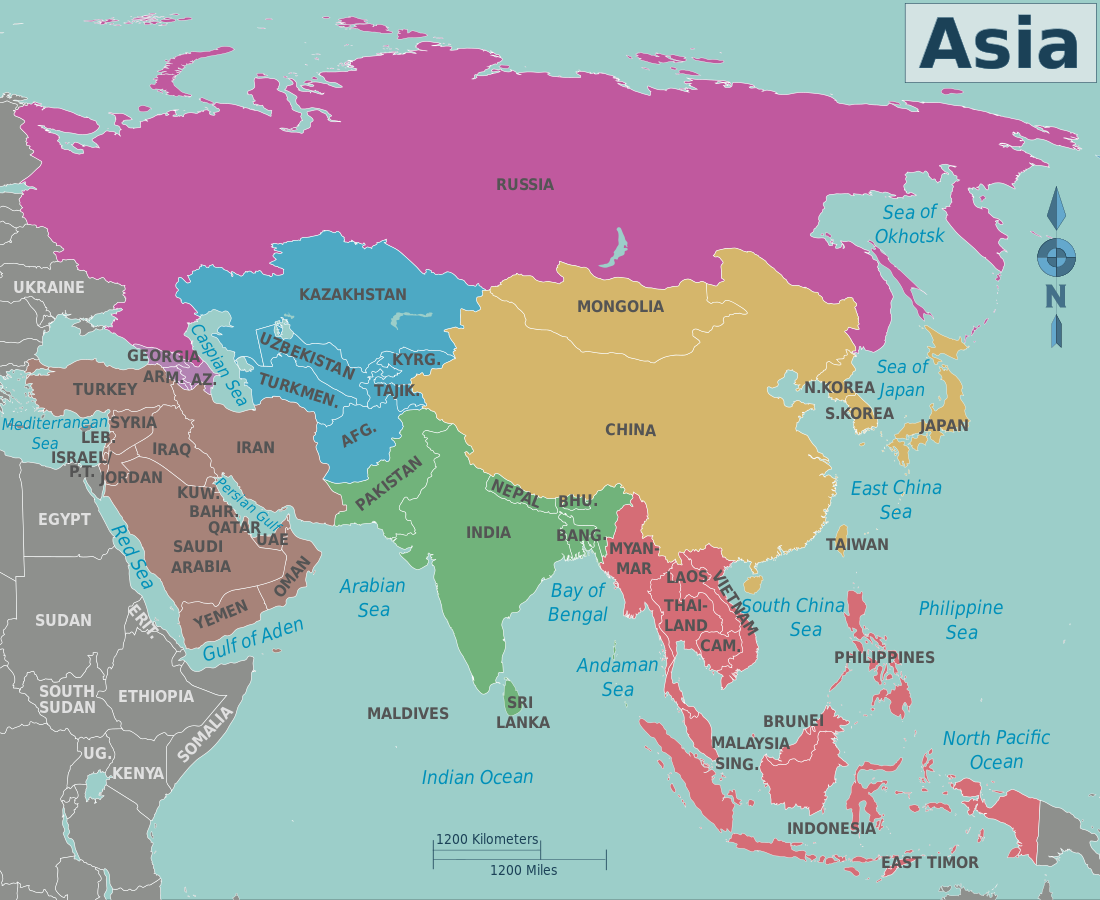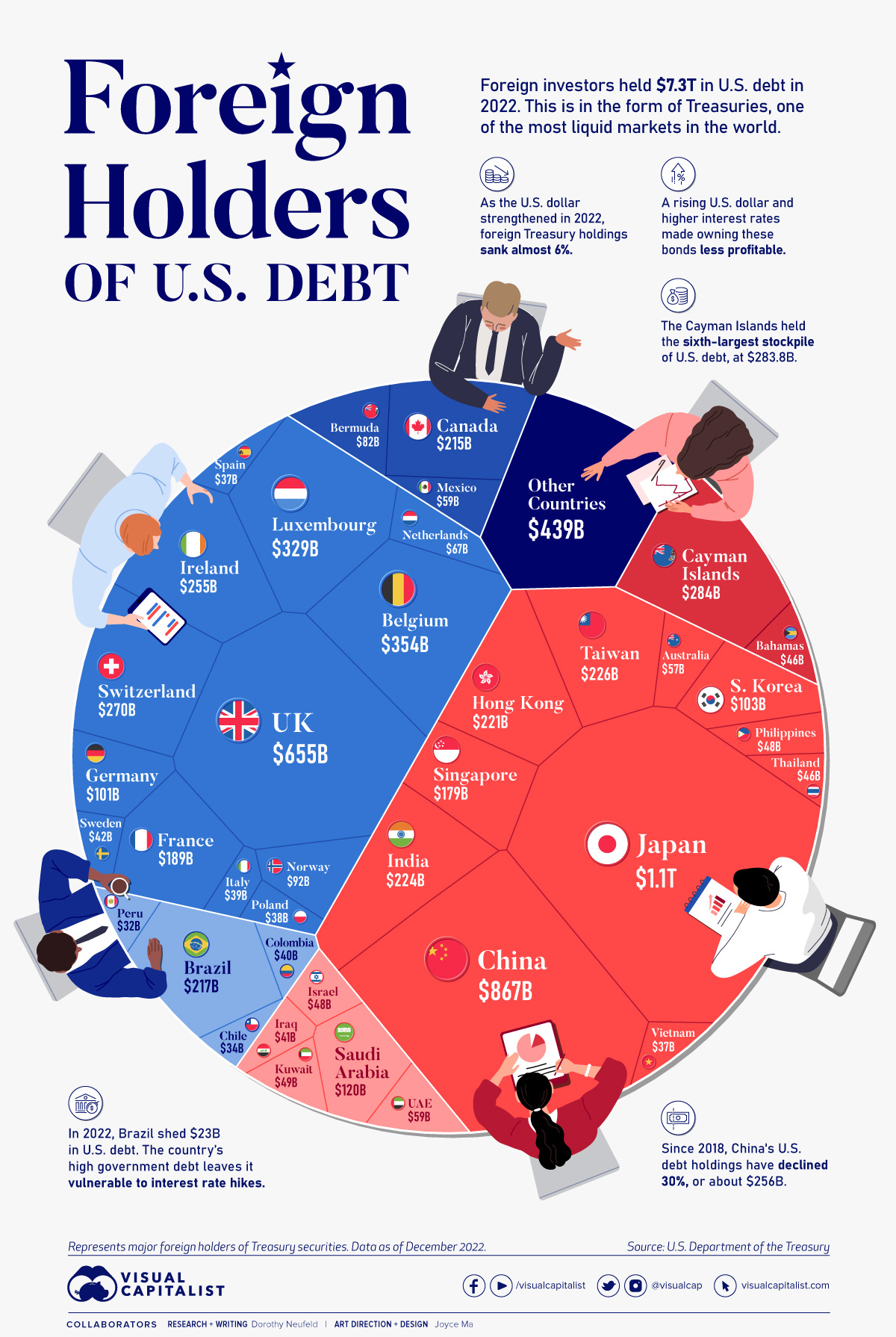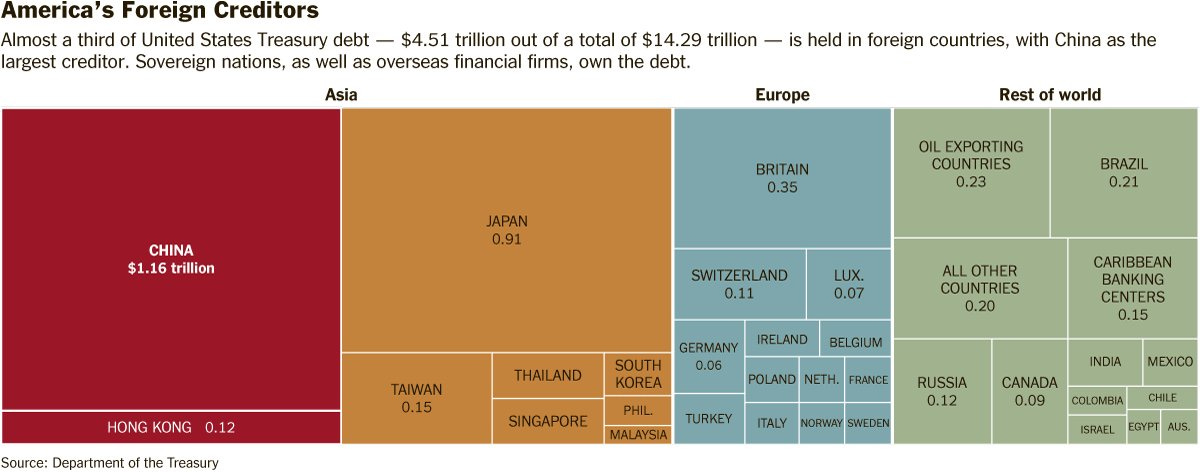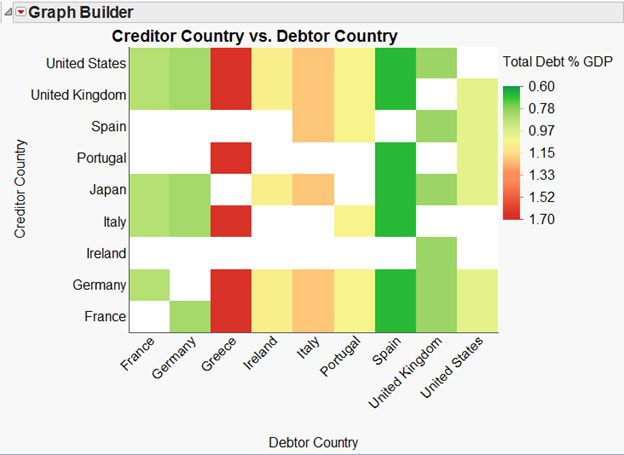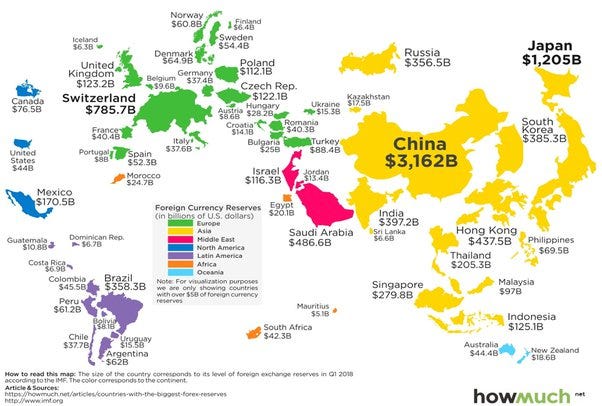– #A humble rational-motivational approximation to understanding more, being prepared and fearing less –
Nothing in life is to be feared, it is only to be understood. Now is the time to understand more, so that we may fear less. (Marie Curie)
VITAMIN C+ | “CLEAR VIEW” BRIEFING
Point of Origin
The graphical illustrations and charts are providing an abstract sketching the global competitiveness of the most powerful Global Alliances – specifically BRICS[1] vs NATO[2], the latter covering most of the of G7[3] and EU[4] countries.
Impetus and Momentum of Thoughts
This publication is gravitating towards Putin‘s nuclear threats[5] and Sino-India’s Admission of his Russo-Ukrainian War, while pointing at the challenge of maintaining and sustaining coherence among Democracies[6] in conducting international sanctions[7] against Russia’s One Man Show of a Totalitarian Regime.
Keeping in mind, the on-going Israel-Hamas War[8] having featured a multitude of groups‘ (Hezbollah[9], Houthi[10]) and countries‘ (Turkey, Saudi-Arabia) entanglement[11] increasingly turning the Middle East into the Russo-Ukrainian War’s Appendix; especially in terms of Iran’s Mullahs[12] and North Korea’s Kim[13] having opted for a Russo-Iranian-North Korean cooperation. Moreover, EU Member Hungary (Orban[14]) and NATO Member Turkey (Erdoğan[15]) are still remaining economically loyal to Putin’s Regime.
Against the historical backdrop of Sino-Russian clashes, Sino-Indian conflicts and Indian-Pakistani frictions, Putin’s position as an Arbiter[16] having evolved over the past decade in substantiating Eurasian Peace, deserves undivided regard by means of him having merely established an extremely volatile alliance on the best alternatives to serving his (own) personal interests.
Note on the Context of Global Political Challenges
United States of America || Household Debt[17] – Natural Resources[18] – Republican Presidential Pre-Elections[19] (Trump’s[20] Pro-Putinian mindset and anti-constitutional sentiment / Haley‘s[21] desultoriness and lack of disambiguation)
European Union || Climate Change[22] – Debt[23] – Natural Resources[24] – Ukrainian Arms Support[25] – Refugees[26]
BRICS || Natural Resources[27] || Brazil: Homocide[28] – Logging[29] – Populism[30] – Poverty[31] | Russia: Sanctions[32] | India: Economy[33] – E-Waste[34] – Poverty[35] | China: Bad Debt[36] | South-Africa: Economy[37] – Poverty[38]
(B)RIC(S) || Sino-Russo-Indian Relations with the United States of America[39] | Sino-Indian Border Dispute Reverb[40] | Sino-Russian Double Bind[41] | Indian-Russian Aggravation of Friendship and Cooperation[42]
Note on Provision of Facts and Figures
Varying reference resources (providers), availability of annually publicised information (2021 to 2024), degree of data reliability (estimation/actual), nature and scope of the providers‘ empirical research as much as layout of data delivery and interpretation being shared, do not impair the structurally relevant key figures‘ validity, clarity and significance.
When you see something that is technically sweet, you go ahead and do it and you argue about what to do about it only after you have had your technical success. That is the way it was with the atomic bomb. (J. Robert Oppenheimer)
VITAMIN C.I | NUCLEAR BALANCE OF POWER[43]
Approximating a determination of Relative Strength and Balance of Power on historical Evidence of China’s[44], India’s[45] and Russia’s[46] past Nuclear Conflicts considering Future Scenarios of Friction[47] ––– checking comparative reference information[48]:
VITAMIN C.II | EURASIAN TRIANGLE OF POWER
Familiarising with China‘s[49], India‘s[50] and Russia‘s[51] Geography, History, Business Cultures[52], Global Images[53] and Foreign Relations[54]:
China’s Business Culture (casual address)
You'll find it beneficial to bring your own interpreter, if possible, to help you understand the subtleties of everything being said during meetings.
Speak in short, simple, sentences free of jargon and slang. Pause frequently, so that people will be able to understand everything you've said.
You will have to make presentations to different levels of the organisation.
Before you arrive, have at least 20 copies of your proposal ready for distribution.
Printed presentation materials of any kind should be only in black and white. Avoid colours that are attributed special meanings in this culture, many of them negative.
Generally, the Chinese treat outside information with caution.
Except for those educated in the West, Chinese businesspeople largely rely on subjective feelings and personal experiences in forming opinions and solving problems.
Belief in the Communist party line will be a dominant influence in all negotiations.
Empirical evidence and other objective facts will be accepted only if they do not contradict Communist party doctrine and one's feelings.
In this country, responsibility for all decisions rests with the Communist party and assorted government bureaucrats. Individuals working within this network, however, are still accountable for their own actions.
Local decisions are made by the head of the collective.
In Chinese business culture, the collectivist way of thinking still prevails, even in sectors experimenting with free enterprise.
Saving face is an important concept to understand. In Chinese business culture, a person's reputation and social standing rests on this concept. Causing embarrassment or loss of composure, even unintentionally, can be disastrous for business negotiations.
The Chinese are very keen about exchanging business cards, so be sure to bring a plentiful supply. Ensure that one side is in English and the other is in Chinese, preferably in the local dialect.
Include your professional title on your business card, especially if you have the seniority to make decisions. In Chinese business culture, the main point of exchanging business cards is to determine who will be the key decision-makers on your side.
If your company is the oldest or largest in your country, or has another prestigious distinction, ensure that this is stated on your card.
It 's an asset to have your business cards printed in gold ink. In Chinese business culture, gold is the colour of prestige, prosperity.
Present your card with two hands, and ensure that the Chinese side is facing the recipient.
When receiving a business card, make a show of examining it carefully for a few moments; then, carefully place it into your card case or on the table, if you are seated at one.
Not reading a business card that has been presented to you, then stuffing it directly into your back pocket, will be a breach of protocol.
In accordance with Chinese business protocol, people are expected to enter the meeting room in hierarchical order. For example, the Chinese will assume that the first foreigner to enter the room is head of the delegation.
Since there is such a strong emphasis on hierarchy in Chinese business culture, ensure that you bring a senior member of your organisation to lead the negotiations on your behalf. The Chinese will do the same.
Only the senior members of your group are expected to lead the discussion. Interruptions of any kind from subordinates are considered shocking by the Chinese.
In Chinese business culture, humility is a virtue. Exaggerated claims are regarded with suspicion and, in most instances, will be investigated.
The Chinese will not directly say no to you. Instead, ambivalent answers such as perhaps, I'm not sure, I'll think about it, or We'll see usually mean no.
The Chinese tend to extend negotiations well beyond the official deadline to gain advantage. On the final day of your visit, they even may try to renegotiate everything.
Be patient, show little emotion, and calmly accept that delays will occur. Moreover, do not mention deadlines.
At the end of a meeting, you are expected to leave before your Chinese counterparts.
You may have to make several trips to China to achieve your objectives. Chinese businesspeople prefer to establish a strong relationship before closing a deal.
Even after the contract is signed, the Chinese will often continue to press for a better deal.
India’s Business Culture (casual address)
Like the rest of India, Indian business culture is also very diverse and heterogeneous. While the following points would help in negotiating a deal, it is important to be sensitive to, and appreciate, the diversity of Indian business culture, which varies across regions, sectors, and ownership patterns.
A large part of Indian businesses are family-owned or 'owned' by members of different social communities. Among these, Parsi, Marwari, Gujarati and Chettiar communities are the prominent ones, and have controlling interests in some of the largest Indian business houses.
Though many of these business houses are quite modern/western in their working and operations, and follow the international norms for doing business - nevertheless, it is useful to understand their specific community culture.
In addition, there are differences between the government-owned public sector companies, which are more often bureaucratic and hierarchical, compared to many of their private sector counterparts, and the 'new economy' service sector companies [IT, telecom, insurance, etc.], which are in turn more egalitarian and flexible than the traditional manufacturing-sector firms.
There are also regional differences in business etiquette. For instance, broadly speaking, the southern Indian companies are more conservative when compared to the north, or the western part of the country. These sectors, in turn, tend to be more individualistic and assertive than the eastern portion of India.
Presenting and exchanging business cards are a necessary part of doing business in India. You must bring plenty since people exchange business cards even in non-business situations.
English is the common language for conducting business, and therefore, it is not necessary to get your card translated into any Indian language. If you are not from an English-speaking country, then you must get your brochures and other promotional material prepared in English.
Though widely spoken and used, there are nuances of Indian English which are quite native. For instance, there are local meanings of terms like 'Himalayan blunder' [grave mistake], 'go down' [warehouse], 'deadly' [intense or very good], etc. Similarly, you may find people using terms like 'cousin-brother' or 'cousin-sister', or overuse terms like 'actually', 'obviously', 'simply', etc., in their sentences.
In addition, the pronunciation varies widely across the country, which can sometimes make it difficult to understand spoken English. You can, however, request a person to repeat what s/he has said slowly. Such a request from a foreigner is not considered as a discourtesy.
Foreign joint ventures and technical collaborations are not new in the Indian business environment. Well-known American, European and Japanese companies have been doing business in India for more than two - and even more - decades. Therefore, if you are representing a well-known global company, you will find that, by and large, Indians are comfortable and open to negotiation, and an intermediary is not required to establish one's credentials.
If, however, you are representing a lesser known country or a small company, it will help to get some referrals from your other clients/partners in India.
Indian laws and bureaucracy are quite intricate and cumbersome. Besides the statutes of the Central government, there are numerous pieces of legislation which differ considerably across the states. It is, therefore, advisable to hire an Indian lawyer or liaison person, who can help you to manoeuvre through these intricacies.
Though its importance may vary in degrees across regions and sectors, hierarchy matters in India.
Try to get your first appointment with the person who is high in authority in the concerned department/organisation. It is likely that s/he may later direct you to meet someone in the middle-level hierarchy, who would be actually relevant for your business. However, coming through the superior person is likely to help when it comes to implementation of decisions.
You will often find that, as a sign of respect, the subordinates stand up when the boss enters the meeting room. This is a normal phenomenon in the Indian context. For many people coming from more individualistic cultures, this creates a dilemma - to rise or not. The best option is to get up from your seat and greet him/her personally.
Despite gradual changes in societal values, respect for age, loyalty to one's family, community or group, and practice of certain religious rituals are still observed in Indian work-settings, in varying degrees.
Women executives, in senior positions, are a relatively new phenomenon in the Indian business environment. If you are a woman, you will normally find people respectful and courteous, but not very comfortable in working with you for business deals. You may have to make extra efforts to get them to discuss business with you.
The pace of business meetings in India is comparatively far more relaxed than in some of the western countries, such as the United States.
Indians are somewhat lax about time. Even if you arrive on time, it is likely that the scheduled meeting may start with some delay, or that you are kept waiting. This often happens, and does not necessarily mean much. However, a long delay in the meeting can be a signal that you are being given less importance.
Indians do not directly jump into business negotiations; in fact, that may be seen as rude. Building a relationship is often considered a prerequisite to doing business.
Meetings normally start with small talk about non-work-related topics [ranging from weather to whether your journey was comfortable], before people start talking about business issues. Do not feel surprised if you are asked some 'personal' questions about your family, children, etc..
Similarly, showing hospitality is part of the negotiation process. Often meetings start by offering tea/coffee and snacks. It is courteous to accept the offer.
Compared to many other cultures, relationships and feelings play a larger role in decisions in India. In general, Indians tend to take larger risks with a person whose intentions they trust. Thus, one's credibility and trustworthiness are critical in negotiating a deal.
Indians are 'polychronic' people, i.e., they tend to deal with more than one task at the same time. So be prepared for some distractions/ disturbances during the meeting, e.g., a secretary walking in to get some papers signed, or the conversation sometimes digressing into unrelated topics. One must appreciate that such behaviour/occurrences do not show a lack of interest or attention.
Indians are inductive in their approach to understanding things. In the Indian psyche, reality can be understood only in its overall context. Knowing the personal, social and historical contexts [of people, events, ideas, etc.] are a precondition to comprehending them accurately. Therefore, one should be prepared for questions and enquiries, which may not seem to be directly related to the subject. To people coming from more deductive cultures, this behaviour often appears to indicate a lack of focus and digression.
PowerPoint presentations are generally accepted to start the discussion. It is necessary, however, to send a more detailed proposal in advance. Often, the details of the proposal are vetted by some middle-level executive, who will then brief the superior about them.
In general, Indians are cautious in accepting a new idea or proposal. Openness to a new idea depends not only on its quality, but also on its source and endorsement. That is, information about who else has implemented it or who has proposed it has a major influence on the decision about a new idea. In making a proposal, you must include such details accordingly.
Indians usually do not express their disagreements openly and directly; doing so would be considered discourteous. Instead, when differences arise, they may circumvent them by statements such as 'we will discuss this later' or 'I will have to check with others about this.'
Bargaining for the price or additional concessions is normal in India. Indian negotiators expect and value flexibility in negotiation. Therefore, sometimes a straightforward offer may be perceived as a rigid stand. It is always advisable to build some buffers in one's initial offer, which allow for bargaining later.
Do not insist on commitment in the first meeting. Making a decision, in Indian organisations, is often a long-drawn out process. This is not only because of the bureaucratic nature of many Indian organisations, but also because a decision may have to be ratified by people who may not be present at the negotiating table.
Russia’s Business Culture (casual address)
The use of business cards is common, and often a necessity, since telephone books are not widely distributed in certain areas. Consequently, be sure to bring a plentiful supply of cards.
It 's an asset to have your business card translated into Russian [with Cyrillic text] on the reverse side. In addition to your full name and title, ensure that you include any university degrees you have earned.
When handing out your translated card, present it so that the side printed in Russian is facing the recipient.
Some people, lacking the resources, may not have their own business cards. In this situation, the best policy is to write down the phone numbers, business addresses, and other relevant information you will need.
Ensure that all of your correspondence is keyed in Russian, as this will allow your letters to be received and read with greater promptness.
In most offices, the addressee opens his or her mail, rather than administrative personnel; understandably, this may cause delays. It 's advisable to get straight to the point in business letters and related correspondence.
Delays, especially when dealing with offices and government officials over Russia's phone system, are probably inevitable.
It 's recommended that you bring all of the documents you need with you, since fax machines, computers and photocopiers, if available at all, may function inadequately. In Moscow, however, you are not likely to run into these problems.
Russian business culture has a deeply entrenched hierarchy, although the state no longer dominates business as much as it used to. Superiors have authority over their subordinates and are ultimately responsible for the final decision.
In Russian business culture, there are few women in positions of real authority, influence.
It 's essential for women business travellers to dress and act professionally at all times. Even then, women are likely to face considerable challenges conducting business in this country.
When decision-makers are present, meetings can be a time for all participants to exchange information and ideas.
It 's essential that you deal with the key decision-makers, rather than 'gate-keepers' or other go-betweens who are often sent to meet with new visitors. Moreover, plan ahead and make the right contacts well in advance of your trip.
Ensure that you have a contact outside of the negotiations who is an expert in Russian law, which is constantly subject to change in both interpretation and application.
Allowing your Russian contact to get to know you personally is an essential part of successfully conducting business here. It will also help if you make the effort to appear down to earth, sincere, and reliable.
When you are running a meeting ensure that you have a plentiful supply of soft drinks, tea, coffee, Danishes, cookies, and similar snacks. Moreover, do not serve beverages in plastic cups.
Knock and wait for admittance before opening a closed office door. Also, when you leave a room, ensure that the door is closed behind you.
The first meeting is usually just a formality--a time for the Russians to assess the credibility of you and your company. The best strategy is to appear very firm and dignified, while maintaining an air of warmth and approachability; refrain from any displays of aggression or overbearing behaviour.
If you are from the West, Russians can sometimes place a great deal of confidence in your professional competence and experience. Consequently, you may be confronted with very high expectations--and demands--from the Russian side.
The Russian side may try to convince you that they have the necessary credentials and experience to succeed in their field. Further investigation may be needed to verify these claims, which sometimes turn out to be questionable.
Your Russian counterparts may insist that they understand something, when this is not actually the case. Moreover, they sometimes have a tendency to say things they think you want to hear.
Russia is currently going through a profound struggle to replace the values of Communism with those of a free-market economy and democracy.
Many Russians are still unfamiliar with, or misinformed about, concepts that are basic to Western business culture. It may be necessary for you to explain, and persuade your Russian counterparts to accept, ideas such as motivation, fair play, individual accountability and reward, profit and loss, turnover, proprietary rights, good will, public relations, and so on. Whatever you do, these terms should be used only with caution and tact.
Accepting outside information can be difficult for Russians and sometimes, out of frustration, they will fall back into the same old closed-minded patterns.
Presentations should be simple and easy to understand; given the lack of resources, there is no need for special visuals or other frills.
While you may conduct your presentation in English, it is essential that any promotional material and other documentation be printed in Russian. Moreover, it may be in your best interests to bring your own translator, rather than depending on one provided by the Russian delegation.
While strong empirical evidence and other factual data are important in any presentation, making a good overall impression should also be an important priority.
It 's essential that your side display a united front when negotiating with the Russians. A good way to start is by ensuring that all members of your team understand and agree on precisely what they want to achieve from the deal. Then, put all of these points in writing and bring this document to the meeting.
Generally speaking, Russians view compromise as a sign of weakness. Often, they will prolong negotiations by refusing to back down until the other side agrees to make sufficient concessions or shows exceptional firmness. Moreover, the Russians will expect loss of temper, walkouts, threats to end the deal, and similar incidents to occur.
Delay tactics, emotional outbursts, threats, and other pressures are to be expected, but must be resisted. Instead, do everything you can to insist that negotiations emphasise mutual benefits and needs.
Russian negotiators will often make minor concessions and ask for major ones in return.
All written documentation is very important. The Russians will sometimes insist on having a protokol similar to minutes, detailing what has been discussed in the course of a meeting. At the conclusion of the meeting, the protokol is read, everyone agrees to it, and it is signed.
There is an increasing tendency for Russian businessmen to give yes answers and make promises in order to maintain foreign contacts. Be aware, however, that they may not have the authority or ability to follow through.
Praising and rewarding anyone in public is viewed only with suspicion.
Do not expect Russians to work after-hours on weekends or during vacation periods.
It will take a long time for decisions to be made in this country.
Contracts should be clear, concise, and translated into both Russian and English.
Once a contract is singed, don't be surprised if terms in the contract are not met. It is quite common for Russians to attempt to make modifications.
Meetings will often be interrupted by phone calls or visitors.
Since Russians tend to be sensitive and status conscious, you should never treat them in a patronising manner.
Express your own distrust of authority or excessive bureaucracy whenever you can.
Having a drink with your Russian counterparts is one of the easiest ways to establish good will.
I've always thought that the most powerful weapon in the world was the bomb and that's why I gave it to my people, but I've come to the conclusion that the most powerful weapon in the world is not the bomb but it's the truth. ... Intellectual freedom is essential -- freedom to obtain and distribute information, freedom for open-minded and unfearing debate and freedom from pressure by officialdom and prejudices. Such freedom of thought is the only guarantee against an infection of people by mass myths, which, in the hands of treacherous hypocrites and demagogues, can be transformed into bloody dictatorship. (Andrei Sakharov)
VITAMIN C.III | ECONOMY
Reviewing China’s[55], India’s[56] and Russia’s[57] Economic Performance putting focus on GPD Total[58], GDP per Capita[59] and Poverty[60] ––– checking comparative reference information[61]:
VITAMIN C.IV | TRADE
Investigating China’s[62], India’s[63] and Russia’s[64] Trade putting focus on export-driven businesses ––– checking comparative reference information[65]:
Examining China’s, India’s and Russia’s Credit Rating[66], External Debt[67], Foreign Exchange[68] and Gold Reserves[69] ––– checking comparative reference information[70]:
I know not with what weapons World War III will be fought, but World War IV will be fought with sticks and stones. (Abert Einstein)
VITAMIN C+ | “CLEAR VIEW” MILLION DOLLAR QUESTION
Aiming at voiding a Nuclear Holocaust, which Country/Affiliation suggests the greatest overall stamina by means of executive power in the sense of military, economic and financial control, serving to prepare for / endure any kind of global conflict?![71]
Who ‘s being keen on spreading a better understanding?
Kind regards,
Cal Caleido
Frame of Reference
Germany’s Lord of The Loo: In The Need of Having To Pay A Visit … | Germany’s Lord of The Blind(ness): In The Search of An Alternative For Germany | Germany’s Lord of The Appeasement: Barely Enough to Keep Body and Soul Together | Germany’s Lord of The Limbo: In The Need of Staying Unsucked | Germany’s Lord of The Helmet: In The Search of Soft Force
Strength Is In Truth: It 's Not Over Vlad P. ...
The Nuclear Armageddon Revisited (I) | The Nuclear Armageddon Revisited (II) | The Nuclear Armageddon Revisited (III) | The Nuclear Armageddon Revisited (IV) | The Nuclear Armageddon Revisited (V) | The Nuclear Armageddon Revisited (VI) | The Nuclear Armageddon Revisited (VII)
The Nuclear Threat is Back (I) - Cal Caleido’s Caleidoscope (substack.com) | The Nuclear Threat is Back (II) (substack.com) | The Nuclear Threat is Back (III) (substack.com)
Vladimir Putin's "New Soviet System"
TrumPutinian Tango & Th‘ Russian Mafia
Putin’s Very First Coup in 1999 at The Intourist Hotel
When Mike Wallace Put Vladimir Putin's Balls To The Wall (2005)
When Reagan, Gorbachev, Kohl and Scorpions Altered The World's Destiny
[1] BRICS: GDP per country 2028 | Statista: Since the beginning of the 21st century, the BRICS countries have been considered the five foremost developing economies in the world. Originally, the term BRIC was used by economists when talking about the emerging economies of Brazil, Russia, India, and China, however these countries have held annual summits since 2009, and the group has expanded to include South Africa since 2010. China has the largest GDP of the BRICS country, at 16.86 trillion U.S. dollars in 2021, while the others are all below three trillion. Combined, the BRICS bloc has a GDP over 25.85 trillion U.S. dollars in 2022. ––– related as follows: BRICS | Members, History, Name Origin, & Proposed Currency | Britannica ––– BRICS countries - Statistics & Facts | Statista ––– BRICS and G7 countries' share of world GDP in PPP 2023 | Statista ––– BRICS and ILO’s Development Cooperation (ilo.org) ––– Promoting BRICS Cooperation for Economic Growth and Development (ipea.gov.br) ––– The Strategy for BRICS - Economic Partnerhip (brics2023.gov.za) ––– China, the BRICS, and the limitations of reshaping global economic governance (www.gov.br)
[2] NATO Member States Military Ranking (2024) (globalfirepower.com)
[3] G7 Economic Data | Data | World Economics
[4] Facts and figures, EU demographics | European Union (europa.eu)
[5] Putin warns the West: Russia is ready for nuclear war | Reuters ––– Russia ‘ready’ for nuclear war, Putin claims – POLITICO
[6] Opposites: The Global State of Democracy 2022 (freedomhouse.org) ––– More than half of countries are democratic | Pew Research Center ––– The Global Expansion of Authoritarian Rule 2022 (freedomhouse.org) ––– Many People Around the World Are Unhappy With How Democracy Is Working | Pew Research Center
[7] International sanctions during the Russo-Ukrainian War (Wikiped) ––– List of people and organizations sanctioned during the Russo-Ukrainian War (Wikiped) ––– Russia | Global Sanctions ––– Sanctions against Russia – a timeline | S&P Global Market Intelligence (spglobal.com) ––– Tracking sanctions against Russia (reuters.com) ––– Russia-related Sanctions | Office of Foreign Assets Control (treasury.gov) ––– related as follows: EU sanctions against Russia over Ukraine - Consilium (europa.eu) ––– EU Sanctions Map ––– related: Inside the staggering losses of Russia's oligarchs: Moscow’s elite have billions wiped | City & Business | Finance | Express.co.uk
[8] Israel-Hamas war (Wikiped) / historical backdrop: Gaza-Israel conflict (Wikiped) ––– related features as follows: Naïve Fallacy: Two-State-Solution ... - Cal Caleido’s Caleidoscope ––– Gaza: Operation Gomorrah! - Cal Caleido’s Caleidoscope ––– Aaron’s Nightmares in The Daytime! - Cal Caleido’s Caleidoscope ––– Erdoğan Juggles Too Many Balls At Once! - Cal Caleido’s Caleidoscope ––– Global Islamic Council! - Cal Caleido’s Caleidoscope ––– Don’t Fear Your Heart Out! - Cal Caleido’s Caleidoscope ––– Freak! Out! Fatwa! - Cal Caleido’s Caleidoscope ––– Damocles‘ Exit Light! - Cal Caleido’s Caleidoscope
[9] Hostilities escalate between Israel and Hezbollah (youtube.com) ––– related: Hezbollah | Meaning, History, & Ideology | Britannica
[10] Filipino seafarers killed in first fatal Houthi attack on commercial shipping | CNN Politics ––– related: Houthi movement | Yemen, Rebels, Red Sea Attacks, & Religion | Britannica
[11] Gaza–Israel conflict (Wikiped): Some analysts believe the conflict has drawn in Egypt, Iran, Turkey, and Qatar, supporting different sides of the conflict in light of the regional standoff between Iran and Saudi Arabia on one hand and between Qatar and Saudi Arabia on the other, as well as crisis in Egyptian-Turkish relations. ––– related: Iran, Hamas and Palestinian Islamic Jihad | Wilson Center (archive.org)
[12] Exclusive: Iran sends Russia hundreds of ballistic missiles | Reuters
[13] North Korean-Russian Military Cooperation Could Threaten Global Security (voanews.com) ––– related: Kim Jong Un (Wikiped)
[14] Orbán: there must always be an entity between Hungary and Russia - Daily News Hungary ––– related: Viktor Orbán (Wikiped)
[15] Cooperation between Türkiye, Russia successfully developing in all areas: Putin (aa.com.tr) ––– related: Recep Tayyip Erdoğan (Wikiped) ––– related features as follows: Erdoğan’s & Milei’s National Lampoon! - Cal Caleido’s Caleidoscope ––– Erdoğan Juggles Too Many Balls At Once! - Cal Caleido’s Caleidoscope ––– Ten Princesses on the President’s Pea! - Cal Caleido’s Caleidoscope
[16] Russia as India-China mediator: How Soviets, Mao's China split over India in 1950s-60s - The Week ––– The Sino-Indian Clash: Russia in the Middle – The Diplomat ––– How Russia emerged as key mediator in the China–India dispute | East Asia Forum ––– Can Russia Mediate Between India and China? — Valdai Club ––– related: Sino-Indian Conflict and the Sino-Soviet Alliance | China's Quest: The History of the Foreign Relations of the People's Republic of China | Oxford Academic (oup.com)
[17] Major foreign holders treasury securities U.S. 2023 | Statista ––– Chart: Who's Holding U.S. Government Debt? | Statista ––– Which Countries Hold the Most U.S. Debt? (visualcapitalist.com)
––– related: America's Foreign Creditors | 2012 - NYTimes.com ––– note: Though outdated still interesting. Unfortunately, charts of such kind ain’t available nowadays – guess why.
[18] The 10 countries with the most valuable natural resources (worldexcellence.com): Natural resources are essential to the survival of any nation. They provide the necessary materials for industry and manufacturing, as well as a source of energy and food. While each country has an abundance of its own resources, there are some nations that stand out among others in terms of their abundance of natural resources. By looking at these top 10 countries with the most natural resources, it’s easy to see why they are so important for the global economy. With their rich supply of resources, these countries will likely remain powerful and influential in the years ahead. ––– || ––– 1. Russia | Key natural resources: Coal, oil, gas, gold, and timber / The net worth of natural resources: $75.7 trillion ––– | ––– 2. United States | Key resources: Copper, oil, natural gas, and gold / The net worth of resources: $45 trillion ––– | ––– 3. Saudi Arabia | Key resources: Timber, natural gas, and oil / The net worth of resources: $34.4 trillion ––– | ––– 4. Canada | Key resources: Oil, natural gas, timber, uranium, and phosphate / Net worth of resources: $33.2 trillion ––– | ––– 5. Iran | Key resources: Natural gas and oil / Net worth of resources: $27.3 trillions ––– | ––– 6. China | Key natural resources: Timber and coal / Net worth of natural resources: $23 trillions ––– | ––– 7. Brazil | Key natural resources: Gold and uranium / The net worth of natural resources: $21.8 trillion ––– | ––– 8. Australia | Key nresources: Coal, copper, iron ore, and timber / Net worth of resources: $19.9 trillion ––– | ––– 9. Iraq | Key resources: Natural gas & oil / The net worth of resources: $15.9 trillion ––– | ––– 10. Venezuela | Key resources: Iron, natural gas and oil / The net worth of resources: $14.3 trillion || Grand Total: $310,50 ––– | ––– related as follows: Total economic value (Wikiped) ––– Commodities - Live Quote Price Trading Data (tradingeconomics.com) ––– Commodity Markets (worldbank.org)
[19] Related features as follows: Repubs vs Democs | A Nation Going Paranoid:- Cal Caleido’s Caleidoscope ––– Greenspan’s Stunt Show! - Cal Caleido’s Caleidoscope ––– Beware of the Alien Nation: - Cal Caleido’s Caleidoscope
[20] Related features as follows: TrumPutinian Tango & Th‘ Russian Mafia! - Cal Caleido’s Caleidoscope ––– An American Idiot’s Helter Skelter! - Cal Caleido’s Caleidoscope ––– When Trump said: "We're going to the Capitol!" ... - Cal Caleido’s Caleidoscope ––– Ink Eradicators of The US Constitution: - Cal Caleido’s Caleidoscope ––– A Counterfeit World: Not only Trump’s. - Cal Caleido’s Caleidoscope ––– Trump’s Sweet Little Lies! - Cal Caleido’s Caleidoscope
[21] Related features as follows: Nikki H. ... Let's Do The Time Warp Again! - Cal Caleido’s Caleidoscope ––– And Nikki said, Hey-Ey-Ey ... - Cal Caleido’s Caleidoscope ––– Julie, Nikki & Rikki, Don’t Lose Your Number! - Cal Caleido’s Caleidoscope
[22] Related features as follows: On A Day Before Tomorrow ... - Cal Caleido’s Caleidoscope ––– SHOOT FROM THE HIP: TERRA – EUPHORIA – PHANTASMAGORIA! - Cal Caleido’s Caleidoscope ––– Energy Spending Spree aD Nineteen Eighty - Cal Caleido’s Caleidoscope ––– Soothe the Lion‘s Tooth: - Cal Caleido’s Caleidoscope
[23] Creditor vs Debtor Country | 2011 (sas.com) ––– note: Though outdated still interesting. Unfortunately, charts of such kind ain’t available nowadays – guess why.
[24] The 10 countries with the most valuable natural resources (worldexcellence.com): Natural resources are essential to the survival of any nation. They provide the necessary materials for industry and manufacturing, as well as a source of energy and food. While each country has an abundance of its own resources, there are some nations that stand out among others in terms of their abundance of natural resources. By looking at these top 10 countries with the most natural resources, it’s easy to see why they are so important for the global economy. With their rich supply of resources, these countries will likely remain powerful and influential in the years ahead. ––– || ––– 1. Russia | Key natural resources: Coal, oil, gas, gold, and timber / The net worth of natural resources: $75.7 trillion ––– | ––– 2. United States | Key resources: Copper, oil, natural gas, and gold / The net worth of resources: $45 trillion ––– | ––– 3. Saudi Arabia | Key resources: Timber, natural gas, and oil / The net worth of resources: $34.4 trillion ––– | ––– 4. Canada | Key resources: Oil, natural gas, timber, uranium, and phosphate / Net worth of resources: $33.2 trillion ––– | ––– 5. Iran | Key resources: Natural gas and oil / Net worth of resources: $27.3 trillions ––– | ––– 6. China | Key natural resources: Timber and coal / Net worth of natural resources: $23 trillions ––– | ––– 7. Brazil | Key natural resources: Gold and uranium / The net worth of natural resources: $21.8 trillion ––– | ––– 8. Australia | Key nresources: Coal, copper, iron ore, and timber / Net worth of resources: $19.9 trillion ––– | ––– 9. Iraq | Key resources: Natural gas & oil / The net worth of resources: $15.9 trillion ––– | ––– 10. Venezuela | Key resources: Iron, natural gas and oil / The net worth of resources: $14.3 trillion || Grand Total: $310,50 ––– | ––– related as follows: Total economic value (Wikiped) ––– Commodities - Live Quote Price Trading Data (tradingeconomics.com) ––– Commodity Markets (worldbank.org)
[25] FOCUS ON GERMANY | Related features as follows: Germany’s Lord of The Loo: In The Need of Having To Pay A Visit … ! - Cal Caleido’s Caleidoscope ––– Germany’s Lord of The Blind(ness): In The Search of An Alternative For Germany! - Cal Caleido’s Caleidoscope ––– Germany’s Lord of The Appeasement: Barely Enough to Keep Body and Soul Together! - Cal Caleido’s Caleidoscope ––– Germany’s Lord of The Limbo: In The Need of Staying Unsucked! - Cal Caleido’s Caleidoscope ––– Germany’s Lord of The Helmet: In The Search of Soft Force! - Cal Caleido’s Caleidoscope
[26] FOCUS ON ITALY | Related features as follows: Una Festa Sui Prati: The Malthusian Curse - Cal Caleido’s Caleidoscope ––– Desert Dune Drifters! - Cal Caleido’s Caleidoscope
[27] The 10 countries with the most valuable natural resources (worldexcellence.com): Natural resources are essential to the survival of any nation. They provide the necessary materials for industry and manufacturing, as well as a source of energy and food. While each country has an abundance of its own resources, there are some nations that stand out among others in terms of their abundance of natural resources. By looking at these top 10 countries with the most natural resources, it’s easy to see why they are so important for the global economy. With their rich supply of resources, these countries will likely remain powerful and influential in the years ahead. ––– || ––– 1. Russia | Key natural resources: Coal, oil, gas, gold, and timber / The net worth of natural resources: $75.7 trillion ––– | ––– 2. United States | Key resources: Copper, oil, natural gas, and gold / The net worth of resources: $45 trillion ––– | ––– 3. Saudi Arabia | Key resources: Timber, natural gas, and oil / The net worth of resources: $34.4 trillion ––– | ––– 4. Canada | Key resources: Oil, natural gas, timber, uranium, and phosphate / Net worth of resources: $33.2 trillion ––– | ––– 5. Iran | Key resources: Natural gas and oil / Net worth of resources: $27.3 trillions ––– | ––– 6. China | Key natural resources: Timber and coal / Net worth of natural resources: $23 trillions ––– | ––– 7. Brazil | Key natural resources: Gold and uranium / The net worth of natural resources: $21.8 trillion ––– | ––– 8. Australia | Key nresources: Coal, copper, iron ore, and timber / Net worth of resources: $19.9 trillion ––– | ––– 9. Iraq | Key resources: Natural gas & oil / The net worth of resources: $15.9 trillion ––– | ––– 10. Venezuela | Key resources: Iron, natural gas and oil / The net worth of resources: $14.3 trillion || Grand Total: $310,50 ––– | ––– related as follows: Total economic value (Wikiped) ––– Commodities - Live Quote Price Trading Data (tradingeconomics.com) ––– Commodity Markets (worldbank.org)
[28] What is driving Brazil's economic downturn? (europa.eu) ––– Figuratively related features by analogy as follows: Milei ... Let’s Talk About Your Mad Money Malaise Over A Cup of Mate!- Cal Caleido’s Caleidoscope ––– Erdoğan’s & Milei’s National Lampoon!- Cal Caleido’s Caleidoscope ––– Kristalina & Ajay ... Let’s Talk about Milei’s Argentina Over A Cup of Mate!- Cal Caleido’s Caleidoscope ––– Mme Villarruel ... Let’s Talk Over A Cup of Mate!- Cal Caleido’s Caleidoscope ––– Milei ... Let’s Talk Over A Cup of Mate! - Cal Caleido’s Caleidoscope
[29] Amazon Rainforest Fires - Rainforest Foundation US
[30] Related feature: Lula's Law on Hitler! - Cal Caleido’s Caleidoscope
[31] Poverty drops to 31.6% of the population in 2022, after reaching 36.7% in 2021 | News Agency (ibge.gov.br)
[32] International sanctions during the Russo-Ukrainian War (Wikiped) ––– List of people and organizations sanctioned during the Russo-Ukrainian War (Wikiped) ––– Russia | Global Sanctions ––– Sanctions against Russia – a timeline | S&P Global Market Intelligence (spglobal.com) ––– Tracking sanctions against Russia (reuters.com) ––– Russia-related Sanctions | Office of Foreign Assets Control (treasury.gov) ––– related as follows: EU sanctions against Russia over Ukraine - Consilium (europa.eu) ––– EU Sanctions Map ––– related: Inside the staggering losses of Russia's oligarchs: Moscow’s elite have billions wiped | City & Business | Finance | Express.co.uk
[33] India economic outlook | Deloitte Insights
[34] Multi-pronged approach needed to solve India’s growing e-waste problem (downtoearth.org.in) ––– Around 78% of India’s e-waste is not being collected or disposed by the government - The Hindu BusinessLine ––– Study on E-Waste Concerns and Troubles in India (irjmets.com)
[35] India's poverty debate: Truth behind the numbers – DW – 01/23/2024
[36] How can China be in debt when everyone owes money to China? - Quora
––– related as follows against backdrop of past decade: Chart: The Countries Most in Debt to China | Statista ––– Is China using debt to colonize poor countries? (biznakenya.com) ––– A new study tracks the surge in Chinese loans to poor countries (economist.com) ––– bne IntelliNews - Chinese loans hike risk of debt distress in Central Asia
[37] South Africa's Economy Loses Momentum Amid Record Power Cuts (imf.org): The country has faced rolling blackouts after years of mismanagement of the state-owned utility, Eskom, prompting the authorities to ease the registration process and licensing requirements for energy production to encourage private sector investment. The government also announced a three-year debt relief arrangement to help Eskom establish its commercial viability and mitigate the energy crisis. Additional far-reaching reforms are needed to achieve job-rich, inclusive, and greener growth. These include improving the country’s energy and logistical constraints, reducing barriers to private sector investment, addressing structural rigidities in the labor market, and tackling crime and corruption. The country’s elevated public debt level—one of the highest among emerging markets—limits the government’s ability to respond to shocks and meet growing social and development needs. Stabilizing the country’s debt and creating room in the budget for targeted social spending and public investment will require reducing the government wage bill and transfers to state-owned enterprises.
[38] Poverty & Equity Brief South Africa Sub-Saharan Africa April 2020 (worldbank.org): Approximately 55.5 percent (30.3 million people) of the population is living in poverty at the national upper poverty line (~ZAR 992) while a total of 13.8 million people (25 percent) are experiencing food poverty.
[39] China/US: China–United States relations (Wikiped) ––– related: This Map Shows Which Countries Prefer China Over the U.S. (nbcnews.com) ––– India/US: India–United States relations (Wikiped) ––– Russia/US: Russia–United States relations (Wikiped) ––– related to Russo-Ukrainian War as follows: Putin’s collection of oddball allies grows by the day. It’s time the west got tougher | Simon Tisdall | The Guardian: Vladimir Putin must be feeling fairly desperate if he’s relying on Kim Jong-un for friendship and support. There’s a reason why North Korea’s unpredictable dictator is among the world’s most ostracised leaders. Nobody likes him and he don’t care, as the saying goes. Yet Russia’s despised, isolated war-criminal president is in much the same leaky boat these days, slowly sinking, calling out for help. After being forced to duck the Brics and G20 summits for fear of arrest, humiliated Putin’s consolation prize is a possible meeting with Kim in Vladivostok this week. It’s a bit of a come-down. But mass murderers need to stick together. ––– Ukraine conflict: Who's in Putin's inner circle and running the war? (bbc.com) ––– Who Are Russia's Top Allies? (globelynews.com): Russia benefits from an array of allies, partners, and fellow travelers, including Belarus, China, India, Iran, and North Korea. ––– NATO - Topic: Relations with Russia: For more than 30 years, NATO tried to build a partnership with Russia, developing dialogue and practical cooperation in areas of common interest. Despite this, Russia has continuously violated the norms and principles that contributed to a stable and predictable European security order, particularly over the past decade. Russia’s brutal and unlawful war of aggression against Ukraine has shattered peace and gravely altered the security environment. In light of its hostile policies and actions, NATO cannot consider Russia to be a partner. The Russian Federation is the most significant and direct threat to Allies’ security and to peace and stability in the Euro-Atlantic area. However, NATO remains willing to keep open channels of communication with Moscow to manage and mitigate risks, prevent escalation and increase transparency. NATO does not seek confrontation and poses no threat to Russia. The Alliance will continue to respond to Russian threats and hostile actions in a united and responsible way.
[40] China–India relations (Wikiped) ––– related (1) as follows: Sino-Indian border dispute (Wikiped) ––– Sino-Indian War | Causes, Summary, & Casualties | Britannica ––– Putting the Border Dispute in Historical Context (af.edu) ––– Border Disputes, War and the Changing Dynamics of India's China Policy (uok.edu.in) ––– Sino-Indian Border Disputes in an Era of Strategic Expansions (armywarcollege.edu) ––– related (2) as follows: Conflict on the Sino-Indian Border Background for Congress (uscc.gov) ––– Conflict on the Sino-Indian Border Background for Congress (carnegieendowment.org) ––– Sino-Indian Border Deadlock - Time to Rewrite India Playbook (orfonline.org) ––– Sino-Indian Boundary Dispute - China's Capabilities, Options and Thoughts in the Near Future (vifindia.org) ––– The Sino-Indian Border dispute - Significance for EU (eias.org)
[41] Opposites: China-Russia relations: A quantum leap? (europa.eu) ––– How Russia war-gamed a Chinese invasion (ft.com) ––– What Are the Weaknesses of the China-Russia Relationship? | ChinaPower Project (csis.org) ––– related as follows: China–Russia relations (Wikiped) ––– What Are the Legacies of Sino-Russian Relations? - ICDS ––– What Are the Key Strengths of the China-Russia Relationship? | ChinaPower Project (csis.org) ––– China-Russia Relations (sgp.fas.org)
[42] Opposites: India–Russia relations (Wikiped) ––– related (1) as follows: India–Soviet Union relations (Wikiped) ––– Indo-Soviet Treaty of Friendship and Cooperation (Wikiped) ––– Indo-Soviet Relations (cia.gov) ––– Soviet Foreign Aide to Russia (upd.edu.ph) ––– related (2) as follows: The twilight of the Russian-Indian strategic partnership | OSW Centre for Eastern Studies
[43] Status of World Nuclear Forces - Federation of American Scientists (fas.org)
[44] China and weapons of mass destruction (Wikiped) || 2024 China Military Strength (globalfirepower.com) || People's Liberation Army (Wikiped) || > Sino-Soviet dispute | political history | Britannica ––– 20th-century international relations - Sino-Soviet Split, Cold War, Ideology | Britannica ––– Sino-Soviet border conflict (Wikiped) ––– Sino-Soviet conflict (1929) (Wikiped) ––– | ––– related (1) as follows: The Sino-Soviet territorial dispute, 1949-64 : Ginsburgs, George : Internet Archive ––– The Sino-Soviet conflict 1956-1961 : Internet Archive ––– The Sino-Soviet dispute : Internet Archive ––– related (2) as follows: Cold War Turning Point - The Sino-Soviet Split and the Prelude to Detente with the United States, 1965-1968 ––– Origins and Consequences of the Soviet-Chinese Border Conflict of 1969 (hokudai.ac.jp) ––– The Sino-Soviet Military Rapprochement (dtic.mil) ––– The 1969 Sino-Soviet Border Conflicts As A Key Turning Point Of The Cold War | Hoover Institution ––– The Sino-Soviet Border Conflict: Deterrence, Escalation, and the Threat of Nuclear War in 1969 | CNA ––– related (3) as follows: Conflict on the Ussuri: The 1969 Sino-Soviet Border Dispute (dtic.mil) ––– New Evidence on Sino-Soviet Rapprochement (wilsoncenter.org) ––– Peking's Tactics and Intentions along the Sino-Soviet Border (gwu.edu) ––– The Sino-Soviet Border Conflict: (cna.org) ––– The Sino-Soviet Border Dispute: Background, Development, and the March 1969 Clashes (rand.org) ––– The Sino-Soviet Border Dispute Facts (armscontrolcenter.org) ––– The Sino-Soviet Split: A Domestic Ideology Analysis (byu.edu) ––– The Sino-Soviet Split Seen from a Provincial Archive in Russia (prchistory.org) ––– related (4) as follows: Sino-Soviet Conflict in the 1970s: Its Evolution and Implications for the Strategic Triangle (rand.org) ––– The Soviet Union and China in the 1980s - reconciliation and divorce (lse.ac.uk)
[45] India and weapons of mass destruction (Wikiped) || 2024 India Military Strength (globalfirepower.com) || Indian Armed Forces (Wikiped) || > How an India-Pakistan nuclear war could start—and have global consequences (rutgers.edu) ––– related (1) as follows: Partition of India (Wikiped) ––– India–Pakistan relations (Wikiped) ––– related (2) as follows: Indo-Pakistani wars and conflicts (Wikiped) | List of wars involving Pakistan (Wikiped) ––– Kashmir conflict (Wikiped) | Timeline of the Kashmir conflict (Wikiped): The following is a timeline of the Kashmir conflict, a territorial conflict between India, Pakistan and, to a lesser degree, China. India and Pakistan have been involved in four wars and several border skirmishes over the issue. ––– related (3) as follows: Indo-Pakistani war of 1947–1948 (Wikiped) ––– Indo-Pakistani war of 1965 (Wikiped) ––– Indo-Pakistani war of 1971 (Wikiped) ––– Siachen conflict (Wikiped) ––– Kargil War (Wikiped) ––– related (4) as follows: 2001–2002 India–Pakistan standoff (Wikiped) ––– 2019 India–Pakistan border skirmishes (Wikiped) ––– 2020–21 India–Pakistan border skirmishes (Wikiped) ––– 2023 India-Pakistan border skirmishes (Wikiped) ––– || ––– related: Sino-Indian Conflict and the Sino-Soviet Alliance | China's Quest: The History of the Foreign Relations of the People's Republic of China | Oxford Academic (oup.com) ––– || ––– related: Indira Gandhi wanted Pak to join group against Russia in 1980: CIA report (deccanchronicle.com)
[46] Russia and weapons of mass destruction (Wikiped) || 2024 Russia Military Strength (globalfirepower.com) || Russian Armed Forces (Wikiped) || > Cuban Missile Crisis | The World on the Brink of War | Britannica
[47] LONG STANDING GLOBAL VIEWS || 1982: The Consequences of a "Limited" Nuclear War in East and West Germany (princeton.edu) ––– 1988: How Nuclear War Might Start: Scenarios from the Early 21st Century (rand.org) ––– 2014: Nuclear Deterrence, Nuclear War Planning, and Scenarios of Nuclear Conflict (bmeia.gv.at) ––– 2017: Nuclear Emp Attack Scenarios and Combined-Arms Cyber Warfare (dtic.mil) ––– 2020: Nuclear War as a Global Catastrophic Risk (jhuapl.edu) ––– 2022: What would a nuclear war look like? (sgr.org.uk) – note: What a stupid question! ––– 2023: Global Effects of Nuclear Conflict - Implications for Nuclear Policymaking, Then and Now ––– | RECENT EUROPEAN VIEWS || 2023: Scenario-building Workshop Europe after the war (europeanleadershipnetwork.org) ––– CURRENT VIEWS ON RUSSO-UKRAINIAN WAR || 2024: Five Security Scenarios on Russian War in Ukraine for 2024-2025 - Implications and Policy Recommendations (europeanleadershipnetwork.org) ––– The War in Ukraine and Europe's Geopolitical Awakening
[48] Status of World Nuclear Forces - Federation of American Scientists (fas.org): Despite progress in reducing nuclear weapon arsenals since the Cold War, the world’s combined inventory of nuclear warheads remains at a very high level: nine countries possessed roughly 12,500 warheads as of early-2023. Combined, the United States and Russia now possess approximately 89 percent of the world’s total inventory of nuclear weapons, and 86 percent of the stockpiled warheads available for use by the military. Currently, no other nuclear-armed state sees a need for more than a few hundred nuclear weapons for national security, although many of these states are increasing their nuclear stockpiles. Globally, the overall inventory of nuclear weapons is declining, but the pace of reductions is slowing compared with the past 30 years. Moreover, these reductions are happening only because the United States and Russia are still dismantling previously retired warheads. In contrast to the overall inventory of nuclear weapons, the number of warheads in global military stockpiles – which comprises warheads assigned to operational forces – is increasing once again. The United States is still reducing its nuclear stockpile slowly. France and Israel have relatively stable inventories. But China, India, North Korea, Pakistan and the United Kingdom, as well as possibly Russia, are all thought to be increasing their stockpiles. ––– related as follows: Top 10 Countries With Most Powerful Military Strength - Forbes India ––– Global Firepower - 2024 World Military Strength Rankings ––– related feature: The Nuclear Threat is Back (I) - Cal Caleido’s Caleidoscope
[49] India | History, Map, Population, Economy, & Facts | Britannica ––– related as follows: Demographics of India (Wikiped) ––– India Population (2024) - Worldometer (worldometers.info)
[50] Russia | History, Flag, Population, Map, President, & Facts | Britannica ––– related as follows: Soviet Union | History, Leaders, Flag, Map, & Anthem | Britannica ––– Collapse of the Soviet Union | Causes, Facts, Events, & Effects | Britannica ––– related as follows: Demographics of Russia (Wikiped) ––– Russia Population (2024) - Worldometer (worldometers.info)
[51] China | Culture, History, Maps, & People | Britannica ––– related as follows: Demographics of China (Wikiped) ––– China Population (2024) - Worldometer (worldometers.info)
[52] Related feature: Great Global Grasp: - Cal Caleido’s Caleidoscope (excerpts on China, India and Russia)
[53] Opposites | China: China’s Collapsing Global Image (cfr.org) ––– India: Views of India Lean Positive Across 23 Countries | Pew Research Center ––– Russia: Perceptions of Russia in the Global World (globalaffairs.ru) ––– The image of Russia in Central & Eastern Europe and the Western Balkans (globsec.org)
[54] China: Foreign relations of China (Wikiped) ––– With World's Eyes on Beijing, Here's How China Ranks Relations Across Globe (newsweek.com) India: With World's Eyes on Beijing, Here's How China Ranks Relations Across Globe (newsweek.com) ––– Russia: Foreign relations of Russia (Wikiped) ––– Russia's Friends and Foes | Statista ––– Who Are Russia's Top Allies? (globelynews.com) ––– Why some EU countries in the east are still pro-Russia | Russia-Ukraine war | Al Jazeera
[55] Economy of China (Wikiped): China has an upper middle income, developing, mixed, socialist market economy incorporating industrial policies and strategic five-year plans. It is the world's second largest economy by nominal GDP, behind the United States, and the world's largest economy since 2016 when measured by purchasing power parity (PPP). Due to a volatile currency exchange rate, China's GDP as measured in dollars fluctuates sharply. China accounted for 19% of the global economy in 2022 in PPP terms, and around 18% in nominal terms in 2022. Historically, China was one of the world's foremost economic powers for most of the two millennia from the 1st until the 19th century. ––– related trade as follows:
[56] Economy of India (Wikiped): The economy of India has transitioned from a mixed planned economy to a mixed middle-income developing social market economy with notable public sector in strategic sectors. It is the world's fifth-largest economy by nominal GDP and the third-largest by purchasing power parity (PPP); on a per capita income basis, India ranked 139th by GDP (nominal) and 127th by GDP (PPP).
[57] Economy of Russia (Wikiped): The economy of Russia has gradually transformed from a planned economy into a mixed market-oriented economy. It has enormous natural resources, particularly oil and natural gas. In 2023, it was the world's 11th-largest economy by nominal GDP, 6th-largest by purchasing power parity (PPP) according to IMF, and 5th-largest according to World Bank.[5] Due to a volatile currency exchange rate, Russia's GDP as measured in dollars fluctuates sharply. Russia was the last major economy to join the WTO, becoming a member in 2012.
[58] China: China | GDP | 2023 | 2024 | Economic Data | World Economics ––– India: India | GDP | 2023 | 2024 | Economic Data | World Economics ––– Russia: Russia | GDP | 2023 | 2024 | Economic Data | World Economics
[59] China: China GDP per Capita | Economic Indicators | CEIC (ceicdata.com) ––– India: India GDP per Capita | Economic Indicators | CEIC (ceicdata.com) ––– Russia: Russia GDP per Capita | Economic Indicators | CEIC (ceicdata.com)
[60] China: Poverty in China (Wikiped) ––– Four Decades of Poverty Reduction in China: Drivers, Insights for the World, and the Way Ahead (worldbank.org) ––– UNDP-CH-PR. Publications - Measuring Poverty with Big Data in China reduced ––– India: Poverty in India (Wikiped) ––– Chronic Poverty in India - Overview Study (publishing.service.gov.uk) ––– Pandemic, Poverty, and Inequality - Evidence from India (imf.org) ––– Russia: Poverty in Russia (Wikiped)/Unemployment in Russia (Wikiped) ––– Poor man's statistics. How Russia combats poverty on paper as the nation grows poorer (theins.ru) ––– Russians are fewer, poorer and more miserable than a decade ago (economist.com) ––– Socioeconomic inequality in Russia (europa.eu) ––– related: Poverty Rate by Country 2023 - Wisevoter
[61] GDP TOTAL || G7: G7: GDP forecast country 2023-2027 | Statista ––– G7: GDP by country 2023 | Statista ––– EU: European Union GDP (tradingeconomics.com) ––– BRICS: BRICS: GDP per country 2028 | Statista ––– | ––– GDP PER CAPITA || G7: GDP per capita, PPP in G7 | TheGlobalEconomy.com ––– EU: European Union GDP Per Capita (tradingeconomics.com) ––– BRICS: BRICS: gross domestic product (GDP) per capita 2028 | Statista: In 2021, the BRICS countries with the highest estimated GDP per capita were Russia and China, with between 12,000 and 13,000 U.S. dollars per person. Brazil and South Africa's GDP per capita are thought to be closer to the 7,000 mark, while India's GDP per capita is just over 2,000 U.S. dollars. POVERTY RATE || G7: Poverty Rate by Country 2023 - Wisevoter ––– EU: Chart: Poverty in Europe | Statista ––– BRICS: Poverty Rate by Country 2023 - Wisevoter
[62] China (CHN) Exports, Imports, and Trade Partners | The Observatory of Economic Complexity (oec.world)
[63] India (IND) Exports, Imports, and Trade Partners | The Observatory of Economic Complexity (oec.world)
[64] Russia (RUS) Exports, Imports, and Trade Partners | The Observatory of Economic Complexity (oec.world)
[65] G7: Recent trends in the international trade flows of G7 economies - Office for National Statistics (ons.gov.uk) ––– EU: European Union | The Observatory of Economic Complexity (oec.world) ––– BRICS: BRICS trade turnover, by country 2022 | Statista
[66] China: China - Credit Rating (tradingeconomics.com) ––– India: India - Credit Rating (tradingeconomics.com) ––– Russia: Russia - Credit Rating (tradingeconomics.com)
[67] China: China Gross External Debt (tradingeconomics.com) ––– India: India Total External Debt (tradingeconomics.com) ––– Russia: Russia Total External Debt (tradingeconomics.com)
[68] China: China Foreign Exchange Reserves (tradingeconomics.com) ––– India: India Foreign Exchange Reserves (tradingeconomics.com) ––– Russia: Russia Foreign Exchange Reserves (tradingeconomics.com)
[69] China: China Gold Reserves (tradingeconomics.com) ––– India: India Gold Reserves (tradingeconomics.com) ––– Russia: Russia Gold Reserves (tradingeconomics.com) ––– related: Daily Metal Price: Gold Price (USD / Metric Ton) for the Last 2 weeks
[70] CREDIT RATING || G7: Credit Rating - Countries - List (tradingeconomics.com) ––– EU: European Union Credit Rating (tradingeconomics.com) ––– BRICS: Credit Rating - Countries - List (tradingeconomics.com) ––– | –– EXTERNAL DEBT || G7: External Debt - Countries - List (tradingeconomics.com) ––– EU: Euro Area Gross External Debt (tradingeconomics.com) ––– BRICS: External Debt - Countries - List (tradingeconomics.com) ––– | ––– FOREIGN EXCHANGE RESERVES || G7 ––– EU ––– BRICS: Foreign Exchange Reserves - Countries - List (tradingeconomics.com) ––– | ––– GOLD RESERVES || G7 ––– EU ––– BRICS: Gold Reserves - Countries - List (tradingeconomics.com)
[71] Economic Superpowers: The 50 largest economies in the world (worlddata.info) ––– | ––– Financial Superpowers: The Hierarchy Of Financial Superpowers – Who’s Really On Top? (forbes.com) ––– The Highest Powers: The rock stars of indexing (etfstream.com) ––– The Higher Powers: Rating Agency (corporatefinanceinstitute.com) ––– The Lower Rung: Banks and Asset Managers: 10 Biggest Banks in the World (investopedia.com) ––– World's Top Asset Management Firms (advratings.com)


